(!) Since support from Microsoft will end on January 14th, 2020, Windows 7 will be excluded from the recommended environment from December 15th, 2019 on this site. Vì lý do Microsoft kết thúc hỗ trợ cho Windows 7 vào ngày 14/01/2020, Windows 7 sẽ là hệ điều hành không được khuyến khích sử dụng với trang web này từ ngày 15/12/2019.
Search by Category / Brand Tìm theo danh mục, nhãn hiệu
Search by Category Tìm theo danh mục
- [Thông báo] Cập nhật địa chỉ kho tập kết hàng hóa tại khu vực miền Nam của MISUMI Việt Nam. Xem chi tiết.
[Announcement] Update on warehouse address in the Southern region of MISUIMI Vietnam. See more. - [Cảnh Báo] Thủ Đoạn Lừa Đảo Từ Nhân Viên Giao Hàng – Yêu Cầu Trả Phí Ship. Xem chi tiết.
[Warning] Fraud Calling from Shipper - Asking to Pay Shipping Fee. See more.
MISUMI Alarms/Buzzers(Shape:Silique type)
Brand |
|
|---|---|
| CAD |
|
| Days to Ship |
|
1 itemsMặt hàng
- Sort By
-
You can add up to 6 items per a category to the compare list.
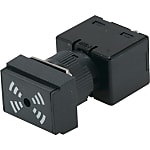










Buzzer Mount Hole Φ16, Φ22, Φ30
MISUMI
In addition to the standard type, an IP54 anti-splash type buzzer is available Mounting hole diameter: ⌀16·⌀22·⌀30
- Volume Discount
- UL
- CSA
- CE-Compliant
- TUV
Volume(dB) Rated Voltage(V) Shape Sound Types of sound Volume adjustment Terminal shape Dimension width(mm) Protection function (IP/drip-proof, etc.) Representative Standard Dimension length(mm) Dimension thickness(mm) 80 ~ 90 - Silique type Continuous / Intermittent Peak Available / NA Solder terminal 18 NA CE / UL / TUV / CSA 24 52 ~ 60 From: 1,061,874 VND Days to Ship: Số ngày giao hàng: 4 Day(s) or more  4 Day(s) or more
4 Day(s) or more
| BrandNhãn hiệu |
|---|
| Product SeriesDòng sản phẩm |
| From |
| Days to ShipSố ngày giao hàng |
| SpecificationsĐặc điểm kĩ thuật |
| Volume(dB) |
| Rated Voltage(V) |
| Shape |
| Sound |
| Types of sound |
| Volume adjustment |
| Terminal shape |
| Dimension width(mm) |
| Protection function (IP/drip-proof, etc.) |
| Representative Standard |
| Dimension length(mm) |
| Dimension thickness(mm) |
You can add up to 6 items per a category to the compare list. | |
| BrandNhãn hiệu | MISUMI |
| Product SeriesDòng sản phẩm | |
| From | 1,061,874 VND- |
| Days to ShipSố ngày giao hàng | 4 Day(s) or more |
| SpecificationsĐặc điểm kĩ thuật |
|
| Volume(dB) | 80 ~ 90 |
| Rated Voltage(V) | - |
| Shape | Silique type |
| Sound | Continuous / Intermittent |
| Types of sound | Peak |
| Volume adjustment | Available / NA |
| Terminal shape | Solder terminal |
| Dimension width(mm) | 18 |
| Protection function (IP/drip-proof, etc.) | NA |
| Representative Standard | CE / UL / TUV / CSA |
| Dimension length(mm) | 24 |
| Dimension thickness(mm) | 52 ~ 60 |
Loading...Tải…
ConfigureTạo
Specification/DimensionsĐặc điểm kỹ thuật / Kích thướcĐặc điểm kỹ thuật / Kích thước
-
Volume(dB)
-
Rated Voltage(V)
- DC12V
- DC24V
- Other
- AC110V
- DC12/24V
- DC12~24V
- AC110/220V
- AC100~240V
- AC220V
- AC/DC110~220V
-
Shape
-
Round
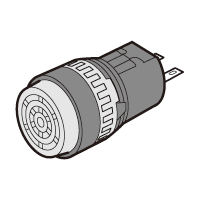
-
Silique type
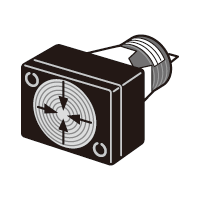
-
Square shape
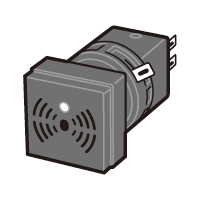
-
Other

-
Round
-
Sound
- Continuous
- Intermittent
-
Types of sound
- Peak
- Boost
- Voice/music
- Other
-
Volume adjustment
- Available
- NA
-
Terminal shape
- Solder terminal
- Tab Terminal
- Screw terminal
- Other
-
Dimension width(mm)
-
Protection function (IP/drip-proof, etc.)
-
Representative Standard
-
Dimension length(mm)
-
Dimension thickness(mm)
Related Categories to Alarms/BuzzersDanh mục liên quan đến Alarms/Buzzers
FAQ Alarms/Buzzers
- Question: How do buzzers function in electrical circuits?
- Answer: Electromagnetic buzzers use an electromagnetic coil to generate a magnetic field. This field attracts a movable diaphragm, causing mechanical vibrations. As the diaphragm moves back and forth, it produces sound waves, resulting in the audible buzzing or beeping sound. Connected to an electrical circuit, the buzzer is activated when current flows through the coil. It's important to note that there are different types of buzzers, including electromagnetic, piezoelectric, and magnetic-transducer buzzers. Each type operates on different principles
- Question: What are the typical uses of buzzers in various industries?
- Answer: Buzzers are widely used in various industries for signaling and alerting. Here are some typical uses of buzzers in different industries such as:
1. Automotive industries: In vehicles, buzzers are employed for warning signals, such as seatbelt reminders, and low fuel indicators.
2. Medical Industries: Medical devices use buzzers for alarms and notifications, such as indicating the end of a medical procedure or alerting healthcare professionals to specific conditions.
3. Industrial Automation: Buzzers are used in manufacturing and industrial settings to signal the completion of processes, indicate faults, or alert operators to specific events.
4. Security Systems Industries: Alarm systems and security devices use buzzers to produce loud alerts in the event of a breach, fire, or other security concerns. - Question: What differentiates piezo buzzers from electromagnetic buzzers?
- Answer:
This table summarizes the key differences between piezo buzzers and electromagnetic buzzers in terms of their operating principles, mechanisms, sound frequency ranges, efficiency, size, and common applications.
Feature Piezo Buzzers Electromagnetic Buzzers Operating Principle Crystal deformation Diaphragm driven by electromagnet Mechanism Crystal vibrations directly produce sound Diaphragm or armature physically moves to create sound Sound Frequency Range Narrow, often in ultrasonic or audible range Broader range, capable of various frequencies Efficiency High efficiency, fast response time Variable efficiency, may have slower response time Size and Weight Generally smaller and lighter Tends to be larger and heavier Applications Compact designs, low power, high-frequency Various applications, broader frequency requirements - Question: What factors determine the loudness of a buzzer?
- Answer: 1. Power Input: Higher electrical power results in increased loudness.
2. Design and Construction: Physical characteristics impact efficiency.
3. Resonance Frequency: Operating at resonant frequency maximizes loudness.
4. Voltage and Current: Increased levels within limits enhance sound output.
5. Environmental Conditions: Surrounding factors influence perceived loudness.
6. Transducer Efficiency: Efficient transducers produce more sound.
7. Sound Output Mechanism: Different mechanisms impact loudness.
8. Duty Cycle: Continuous operation may enhance perceived loudness.
9. Frequency Range: Some frequencies are more noticeable or louder than others. - Question: Can buzzers be considered a form of sound energy?
- Answer: Yes, buzzers can be considered a form of sound energy. Sound energy is a type of mechanical wave that propagates through a medium, such as air, water, or solids. When a buzzer is activated, it typically produces vibrations that create compressions and rarefactions in the surrounding air, generating sound waves. These sound waves carry energy in the form of vibrations, and when they reach our ears, they are perceived as sound.
- Question: How do you integrate a buzzer into a security system?
- Answer: Incorporate a buzzer into a security system by linking it to a controller, such as Arduino or Raspberry Pi. Ensure proper power alignment, connect to a digital output pin, and code the buzzer to respond to security events like unauthorized access detected by sensors.Thoroughly test and calibrate the system, considering backup power.
- Question: How do you choose the appropriate buzzer size and sound level for different environments?
- Answer: Select a buzzer size based on space constraints and application requirements. For quiet environments, opt for smaller, less powerful buzzers to minimize disturbance. In noisy settings, choose larger buzzers with higher sound levels for better audibility. Consider dB ratings to match ambient noise levels; quieter environments need lower dB, while louder surroundings require higher dB ratings. Always test in the specific environment to ensure the chosen buzzer meets the desired sound level without being excessively disruptive or inadequate for the given conditions.
- Question: What are the main considerations when connecting a buzzer to a digital circuit, such as an Arduino or Raspberry Pi?
- Answer: When buzzing with digital circuits, remember these key points:
1. Buzzer type: Choose between active (amplified, needs only digital signal) or passive (requires driver circuit).
2. Voltage and current: Match buzzer specs to your board's capabilities (e.g., 5V for Arduino). Calculate current draw and ensure sufficient power supply.
3. Driving the buzzer: Use a transistor or driver IC for passive buzzers or high current needs. Connect active buzzer directly to a digital pin.
4. Pulse frequency: Control sound pitch and pattern by varying the frequency of the digital signal driving the buzzer (typically 200Hz to 5kHz).
5. Protection: Add a flyback diode across the buzzer to absorb reverse voltage spikes generated when switching it off.



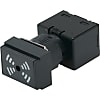







How can we improve?
How can we improve?
While we are not able to respond directly to comments submitted in this form, the information will be reviewed for future improvement.
Customer Privacy Policy
Thank you for your cooperation.
While we are not able to respond directly to comments submitted in this form, the information will be reviewed for future improvement.
Please use the inquiry form.
Customer Privacy Policy